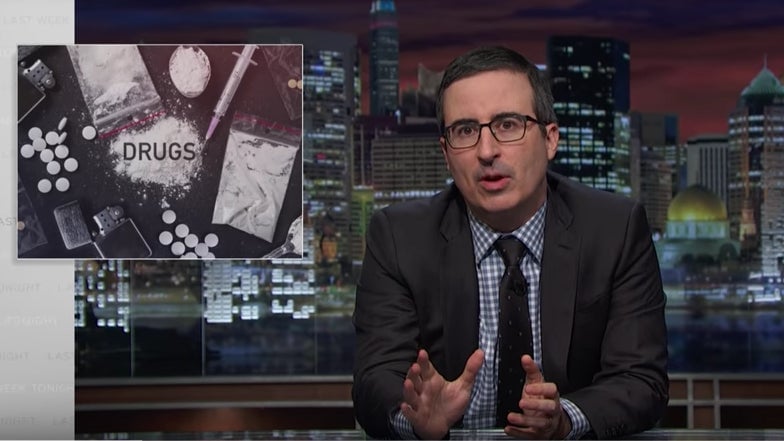John Oliver blames “reckless, greedy” American drug companies for the country’s deadly opioid crisis
The death of the pop superstar Prince, attributed to an overdose of a painkiller 50 times stronger than the street drug heroin, brought the opioid epidemic in America into the spotlight. Unfortunately, it’s not a new phenomenon: The number of Americans dying from opioid overdoses—either by abusing prescription painkillers or heroin—has increased dramatically in recent years.


The death of the pop superstar Prince, attributed to an overdose of a painkiller 50 times stronger than the street drug heroin, brought the opioid epidemic in America into the spotlight. Unfortunately, it’s not a new phenomenon: The number of Americans dying from opioid overdoses—either by abusing prescription painkillers or heroin—has increased dramatically in recent years.
In 2014, prescription pills took the lives of 19,000 Americans, while heroin claimed 10,000. That year, 1.9 million Americans were abusing (pdf) prescription painkillers in some form, and roughly 586,000 were using the cheaper street drug heroin—a “chemical cousin” of legal painkillers, as the comedian and commentator John Oliver pointed out in the Oct. 23 edition of his HBO show, Last Week Tonight.
Oliver cited research showing that three-quarters of heroin addicts started out using prescription opioids. These drugs, including OxyContin and Vicodin, are potent painkillers because of the way they alter a patient’s brain chemistry to dampen the feeling of pain. But they also play with the brain’s reward system, which makes them highly addictive.
American doctors are quite heavy-handed when prescribing these drugs as painkillers. In 2012, doctors prescribed enough opioids for every American to have their own bottle, Oliver points out. Why are doctors prescribing so many opioids? Largely, Oliver says, because of a marketing push by their manufacturers.
In the early 1990s, doctors were afraid of prescribing these painkillers, Oliver explains, precisely because of the risk of addiction. These drugs were mainly given to those suffering from advanced conditions such as acute pain from late-stage cancer, or after surgery. But Oliver notes dryly, “It’s hard to make a lot of money off a product exclusively marketed to those close to death.”
Soon companies began marketing the drugs as an effective way to mitigate chronic pain such as backaches. They also promoted the drugs with CDs, fishing hats, and even plush gorillas, which was clever, Oliver says, because “like a gorilla, OxyContin may seem appealing, but if you’re not careful it will tear your life apart.”
In 2007, Purdue Pharma paid $634 million in fines and three executives pleaded guilty to criminal charges for misleading patients about the addictiveness of OxyContin.
Those practices may be in the past, but Americans still have a massive addiction epidemic on their hands. And there’s no easy solution, when patients still have legitimate needs for effective painkillers.
“At a certain point the question has to become less ‘What did we do wrong?’ and more ‘What do we do now?'” Oliver says. “Because these drugs are still the most effective solution for certain types of pain, and many patients need them, so we can’t get rid of them. But we have to be much more careful about how they’re prescribed.”
The US Centers for Disease Control has implored doctors to prescribe fewer opioid painkillers and rely more on physical therapy or other treatments instead, but pain management is complicated, with no one-size-fits-all for patients experiencing severe chronic or acute pain.
The much-needed remedy to this epidemic, Oliver says, “won’t be cheap, it won’t be quick, and it won’t be easy.”